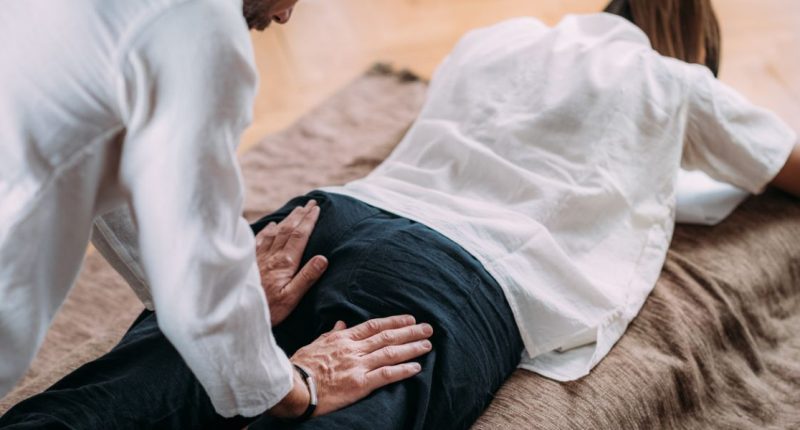Sitting at a desk for long periods of time can cause ‘dead butt syndrome’ which can weaken muscles – but experts have offered some simple tips on how to avoid a condition that can cause severe pain.
Once known as an affliction that only affected athletes, ‘dead butt syndrome’ is now a complaint of those who sit at desks for long periods of time.
Gluteus medius tendinosis – its medical term – is a tendon disorder affecting the hip and buttocks, and can trigger the breakdown on tendon tissue, causing severe pain.
It is common in women over the age of the menopause, and it also affects runners, skiers and dancers.
One cause is too much pressure being put on these tendons through exercise, but it can also be caused by underuse of these tendons through a sedentary lifestyle, or from excess pressure as a result of weight gain.
The pain may be felt when taking the steps or walking up an incline, sitting for a long time, standing on one leg or lying on your side.
A key warning is pain as you get out of bed and the condition can be diagnosed through an MRI or ultrasound.
The long-term effects of gluteal tendinopathy can include chronic pain in the lower body, which can lead to fatigue, irritability and sleep loss.
However, there are ways to prevent it, including avoiding doing repetitive activities that really work the hip area. For those who enjoy running or walking, experts from the Cleveland Clinic recommend taking breaks when you feel pain in that area of your body.
Weight-lifting to strengthen the hip area is also recommended while stretching activities like yoga can help to keep that region of the body flexible. Readjusting your position while sitting, even when relaxed, is another tip.
Orthopaedic surgeon Dr Robert Trasolini said being aware of your posture is important.
- Glucose and fatty acid handled differently by female and male muscles
- Treatments targeting neck muscles could relieve tension headaches
He said: “Sitting with an arched back or slouching at your desk can put significant pressure on your deep butt muscles as well as your lower back.”
Dr Trasolini recommended getting up from sitting at your desk every 30 minutes and taking a short walk.
He said: “Set an alarm every 30 minutes, get up stretch every hour, take a short walk for between three and five minutes. Those allow the muscle to respond and get this thing stronger.”





